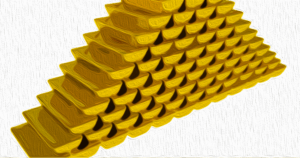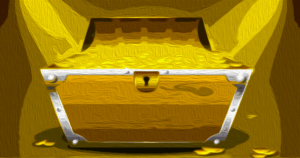
Introduction
The potential of tokenization in bringing alternative investments, such as private equity, private credit, real estate, and hedge funds, to individual investors has been recognized by industry experts. In a report issued by JPMorgan and Bain and Company analysts in December, the significant impact of tokenization technology on financial markets is highlighted. This article explores the benefits of tokenization and its potential to unlock a $400 billion opportunity for players in the ecosystem.
The Significance of Tokenization Tech
Traditionally, alternative investments have been limited to institutional investors due to their complex nature and cumbersome management. However, the advent of tokenization technology is changing this landscape. Tokenizing these alternative investments automates and simplifies their management, making them accessible to both individuals and institutions.
The Potential of Tokenization and Blockchain
Bain and Company emphasize that tokenization and blockchain technology offer a solution to the challenges posed by fragmented and nonstandardized processes across multiple participants in the alternative value chain. By embracing tokenization, the alternative investments ecosystem can grow by $400 billion, benefiting each part of the chain in various ways.
Benefits for Fund Managers
Tokenization allows fund managers to expand their user base and increase their income by simplifying processes. With automated management systems, fund managers can reach a broader range of investors, attracting more capital and driving growth in their funds.
Advantages for Wealth Managers
Wealth managers can also reap the rewards of tokenization. By embracing this technology, they can enhance their revenue streams through strategic collaborations with fund managers. The simplified management of alternative investments enables wealth managers to offer their clients a wider range of investment options.
Opportunities for Wholesale Platforms
Wholesale platforms have the potential to differentiate themselves from the competition by integrating tokenization technology into their solutions. By doing so, they can increase their assets under management and attract more investors who seek the benefits of streamlined alternative investment management.
Tokenization's Impact on Retail Investors
While some actors in the Web3 field promise a retail revolution through tokenization, JPMorgan and Bain and Company analysts have a more tempered outlook. They believe that tokenization will primarily simplify the management of alternative investments for high-net-worth individuals, rather than leading to a widespread retail revolution.
Conclusion
The rise of tokenization presents a $400 billion opportunity for alternative investments. By leveraging blockchain technology, the financial industry can automate and streamline the management of these complex investments, benefiting both institutions and individual investors. As tokenization continues to evolve, it is crucial for industry players to embrace this innovative solution and unlock its full potential.
What are your thoughts on tokenization and its potential for alternative investments? Share your opinions in the comments section below.
Frequently Asked Questions
Which type of IRA is the best?
It is crucial to find the right IRA for your needs. You should consider whether you wish to maximize tax deferred growth, minimize taxes now, pay penalties later or avoid taxes altogether.
If you're saving for retirement and don't have much money invested, the Roth option could make sense. It's also worth considering if your plan is to work after the age of 59 1/2.
The traditional IRA is better if you want to retire earlier because you will likely owe tax on your earnings. If you are going to be working beyond 65 years old, the traditional IRA may make more sense because you can withdraw all or part of your earnings without having to pay taxes.
What are the three types of IRAs?
There are three basic types for IRAs. There are three types of IRAs: Roth, Traditional, and SEP. Each has its own advantages and disadvantages. Each one will be discussed below.
Traditional Individual Retirement Accounts (IRA)
Traditional IRAs allow you to make pretax contributions to an account that allows you to defer taxes while still earning interest. The account can be withdrawn tax-free once you are retired.
Roth IRA
Roth IRAs allow for you to make after-tax deposits into an account. The earnings are tax-free. The account allows you to withdraw funds for retirement.
SEP IRA
This is similar with a Roth IRA, but employees are required to make additional contributions. These additional contributions can be taxed. However, any earnings are now tax-deferred. When you leave your company, you may convert the entire amount into a Roth IRA.
What are some of the advantages and disadvantages to a gold IRA
An excellent investment vehicle is a gold IRA. This is for people who wish to diversify but do not have access to traditional banking services. It allows investors to invest in precious materials such as gold and silver without paying tax on gains until they are withdrawn.
The downside is that early withdrawals will result in ordinary income taxes on earnings. However, creditors will not be able to seize these funds if you default on your loan.
A gold IRA could be the best option for you if your goal is to have gold that you can own without worrying about taxes.
Statistics
- Silver must be 99.9% pure • (forbes.com)
- SEP-IRA”Simplified employee pension” For self-employed people like independent contractors, freelancers, and small-business ownersSame tax rules as traditional IRASEP IRA contributions in 2022 are limited to 25% of compensation or $66,000, whichever is less4. (sltrib.com)
- Depending on your financial situation, most experts recommend you invest no more than 5% to 10% of your retirement funds in precious metals. (forbes.com)
- If you accidentally make an improper transaction, the IRS will disallow it and count it as a withdrawal so that you would owe income tax on the item's value and, if you are younger than 59 ½, an additional 10% early withdrawal penalty. (forbes.com)
External Links
wsj.com
investopedia.com
takemetothesite.com
en.wikipedia.org
How To
How to Determine if a Gold IRA is Right for You
Individual Retirement accounts (IRAs) are the most common type of retirement account. Individual Retirement Accounts (IRAs) are available through financial planners, banks, mutual funds and employers. The IRS allows individuals to contribute up to $5,000 annually without tax consequences. This amount can be deposited into any IRA, regardless your age. You can only put a certain amount into an IRA, but there are restrictions. A Roth IRA is only available to those who are at least 59 1/2. If you're under 50, you must wait until you reach age 70 1/2 before making contributions. Some employees may be eligible to match contributions from their employer.
There are two types of IRAs available: Roth and traditional. Traditional IRAs can be used to invest in stocks or bonds, as well other investments. Roth IRAs are only available for after-tax dollars. Contributions to a Roth IRA aren't taxed when they come out, but withdrawals taken from a Roth IRA are taxed once again. Some people choose to use a combination of these two accounts. Each type is different. There are pros and con's to each. What should you look at before deciding which type is best for you? Keep these three things in mind:
Traditional IRA Pros:
- The company can choose from different contribution options
- Employer match possible
- You can save up to $5,000 per person
- Tax-deferred growth until withdrawal
- There may be restrictions based upon income level
- The maximum annual contribution limit is $5.500 (or $6.500 if married filing jointly).
- The minimum investment required is $1,000
- After age 70 1/2 you are required to begin mandatory distributions
- For an IRA to be opened, you must have at least five-years-old
- You cannot transfer assets between IRAs
Roth IRA Pros:
- Contributions are exempt from taxes
- Earnings grow tax-free
- No required minimum distributions
- Stocks, bonds, and mutual fund investments are the only options.
- There is no maximum contribution limit
- There are no restrictions on the transfer of assets between IRAs
- Age 55 or older to open an IRA
You should be aware that not every company offers the same IRAs. Some companies provide the choice of a Roth IRA as well as a traditional IRA. Others allow you to combine them. There are different requirements for different types. Roth IRAs have no minimum investment requirements, while traditional IRAs require a minimum $1,000 investment.
The Bottom Line
The most important factor when choosing an IRA is whether you plan to pay taxes immediately or later. If you plan to retire in the next ten years, a traditional IRA might be the best choice. A Roth IRA may be a better choice for you. It doesn't matter what, it is a good idea consult a professional to discuss your retirement plans. You need someone who knows what's happening in the market and can recommend the best options for your situation.
—————————————————————————————————————————————————————————————-
By: Sergio Goschenko
Title: The Rise of Tokenization: A $400 Billion Opportunity for Alternative Investments
Sourced From: news.bitcoin.com/bain-and-company-tokenization-can-unlock-a-400b-yearly-alternative-investment-opportunity/
Published Date: Fri, 05 Jan 2024 09:00:29 +0000












